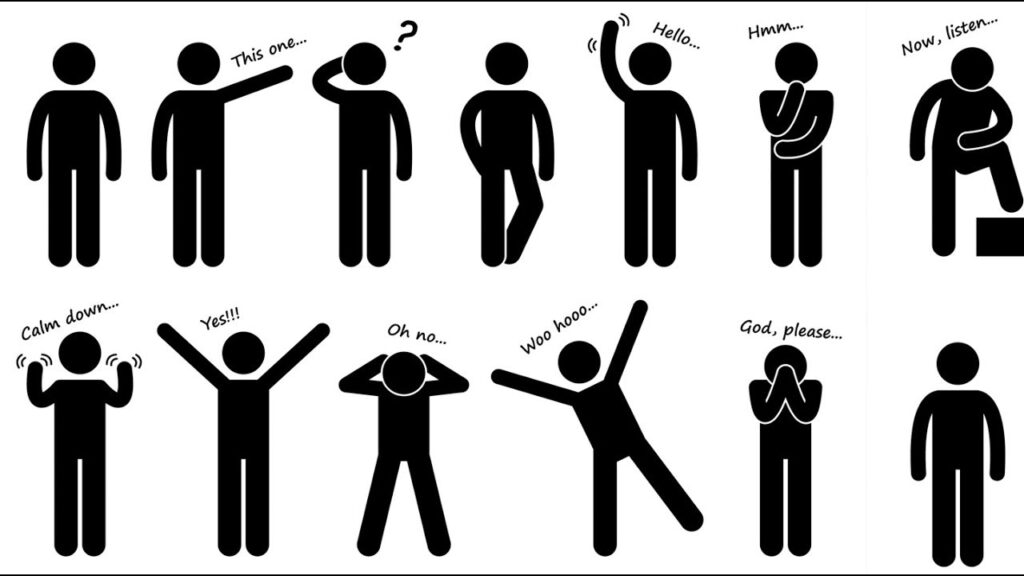Beginner – CEFR Level A1
Understanding Body Language
Body language is a way of communicating without using words. It includes gestures, facial expressions, and body movements. People can understand body language to know how others are feeling or what they want to say. For example, when someone smiles, it usually means they are happy or friendly. When someone crosses their arms, it may mean they are feeling defensive or closed off. By paying attention to body language, we can better understand each other.
Pre-Intermediate – CEFR Level A2
Interpreting Nonverbal Communication
Body language plays an important role in communication. It involves using nonverbal signals to express our thoughts and feelings. Nonverbal signals can include facial expressions, hand gestures, and posture. By observing these signals, we can understand more about a person’s emotions or intentions. For instance, a person who maintains eye contact and nods while listening is showing that they are interested. On the other hand, someone who avoids eye contact may be feeling shy or uncomfortable. Learning to interpret body language can help us communicate effectively in different situations.
Intermediate – CEFR Level B1
The Power of Body Language
Body language can greatly impact how we are perceived by others. It affects the way people interpret our words and intentions. By using open and confident body language, we can make a positive impression and appear more approachable. For example, standing tall, making eye contact, and using hand gestures can convey confidence and engagement. Conversely, closed-off body language, such as crossed arms or avoiding eye contact, may indicate disinterest or defensiveness. Understanding and using body language effectively can enhance our interpersonal relationships and professional interactions.
Upper-Intermediate – CEFR Level B2
Unveiling the Secrets of Body Language
Body language is a fascinating aspect of human communication. It can reveal hidden emotions, attitudes, and even deceit. The subtleties of body language go beyond simple gestures and postures. For instance, microexpressions, fleeting facial expressions that last only a fraction of a second, can indicate a person’s true feelings. Detecting incongruences between verbal and nonverbal cues can help uncover lies or hidden motives. Learning to read body language can give us a deeper understanding of others and help us navigate social interactions with greater insight.
Advanced – CEFR Level C1
Mastering the Art of Nonverbal Communication
Body language is a sophisticated form of nonverbal communication that can convey complex messages. It involves the use of various cues, such as posture, gestures, and eye contact, to express thoughts, emotions, and attitudes. Additionally, cultural and contextual factors play a role in interpreting body language. Being aware of cultural differences and adapting our own body language accordingly is crucial for effective communication across diverse settings. Mastering the art of nonverbal communication requires not only understanding the signals but also being able to integrate them seamlessly into our own behavior. It empowers us to connect deeply with others, enhance our persuasive abilities, and build strong relationships based on mutual understanding.
